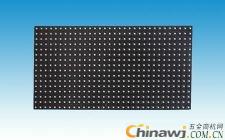As we all know, data transmission plays a crucial role in industrial control systems. The stability of data transfer directly affects the reliability of the overall system. Therefore, ensuring the reliability and stability of data communication has become a critical challenge for engineers. This article discusses an example from the LED kanban display project implemented by our company, highlighting key issues encountered when using RS-485 for long-distance data communication.
The LED kanban display in this project is installed in various production workshops to show real-time output versus target output. Six identical screens are placed across six different workshops, with each cable running between 150 to 200 meters. Due to the long distances and interference from motors operating in the workshop environment, the LED displays experienced frequent communication errors and character corruption.
After thorough analysis and multiple experiments, we addressed the issue from several angles: improving the hardware circuit design, optimizing the host computer and the lower device’s communication protocol, and ultimately resolving the problem effectively. Below is a detailed explanation of the key solutions that helped stabilize the communication system.
1. **Signal Attenuation During Transmission**
Signal attenuation is inevitable during any transmission, regardless of the medium used. In the case of RS-485, the cable can be modeled as an equivalent circuit containing resistors, inductors, and capacitors. While wire resistance has minimal impact, the distributed capacitance between the twisted pair wires is the main contributor to signal loss. This forms an LC low-pass filter, which becomes more significant at higher baud rates, leading to greater signal degradation. To mitigate this, we typically use a baud rate of 9600 bps when the data volume is not too large and high-speed communication is not required.
2. **Signal Reflection on Communication Lines**
Another major issue affecting signal integrity is signal reflection. This occurs due to two primary reasons: impedance mismatch and impedance discontinuity. Impedance mismatch happens when the 485 chip’s impedance does not match that of the communication line, causing unstable signals. A common solution is to add bias resistors to pull up and pull down the bus lines (A and B), ensuring a stable idle state. Impedance discontinuity, on the other hand, occurs when the signal encounters a sudden change in impedance, such as at the end of a cable. To reduce this, termination resistors matching the cable's characteristic impedance are added at both ends of the line. Although this cannot eliminate reflections completely, it significantly reduces their impact.
3. **Impact of Distributed Capacitance on RS-485 Performance**
RS-485 cables often consist of twisted pairs, which naturally create capacitance between the two conductors. Additionally, there is also a small capacitance between the cable and the ground. When transmitting a sequence like 0x01, the “0†level may cause the capacitance to charge for a prolonged period. When the signal switches to “1,†the capacitor cannot discharge quickly enough, resulting in signal distortion and data transmission errors. To address this, we recommend using cables with lower distributed capacitance or better quality, and reducing the communication baud rate to allow sufficient time for the capacitor to discharge.
4. **Designing a Simple and Reliable RS-485 Communication Protocol**
In many cases, one-way communication may suffice for short distances, but in complex environments, a robust communication protocol is essential. Factors such as cable routing, distance, interference levels, and whether shielded twisted-pair cables are used all play a significant role in communication reliability. To enhance reliability, we designed a packet-based communication protocol that includes frame headers, data fields, and a check byte at the end of each frame. The lower device compares its calculated checksum with the one received from the host. If they do not match, the host is instructed to retransmit the packet. This mechanism ensures that errors are minimized, and the system operates smoothly.
5. **Conclusion**
Throughout the project, we implemented several key improvements: replacing non-shielded cables with proper ones, setting adjustable baud rates on both the host and lower devices, optimizing the communication protocol, and adding 120Ω termination resistors at both ends of the communication line. These steps significantly improved the stability and reliability of the LED kanban display system.


Castel Type Refrigeration Solenoid Valve
NINGBO DOTEC is a refrigeration Solenoid Valve manufacturer and supplier in China for many year.
Options:
1. Port Size: 1/4'' to 2-1/8''
2. Connection: ODF (Solder), SAE (Flare)
3. Coil Type: HM2, HM3
4. Coil Voltage: 12VDC, 24VDC, 24VAC, 110VAC, 220VAC, or others
5. Applicable Refrigerants: HCFC, CFC, HFC, etc
CASTEL Solenoid Valve, Solenoid Valve CASTEL, CASTEL Refrigeration Solenoid Valve
NINGBO DOTEC AUTOMATION CO., LTD , https://www.ningbodotec.com